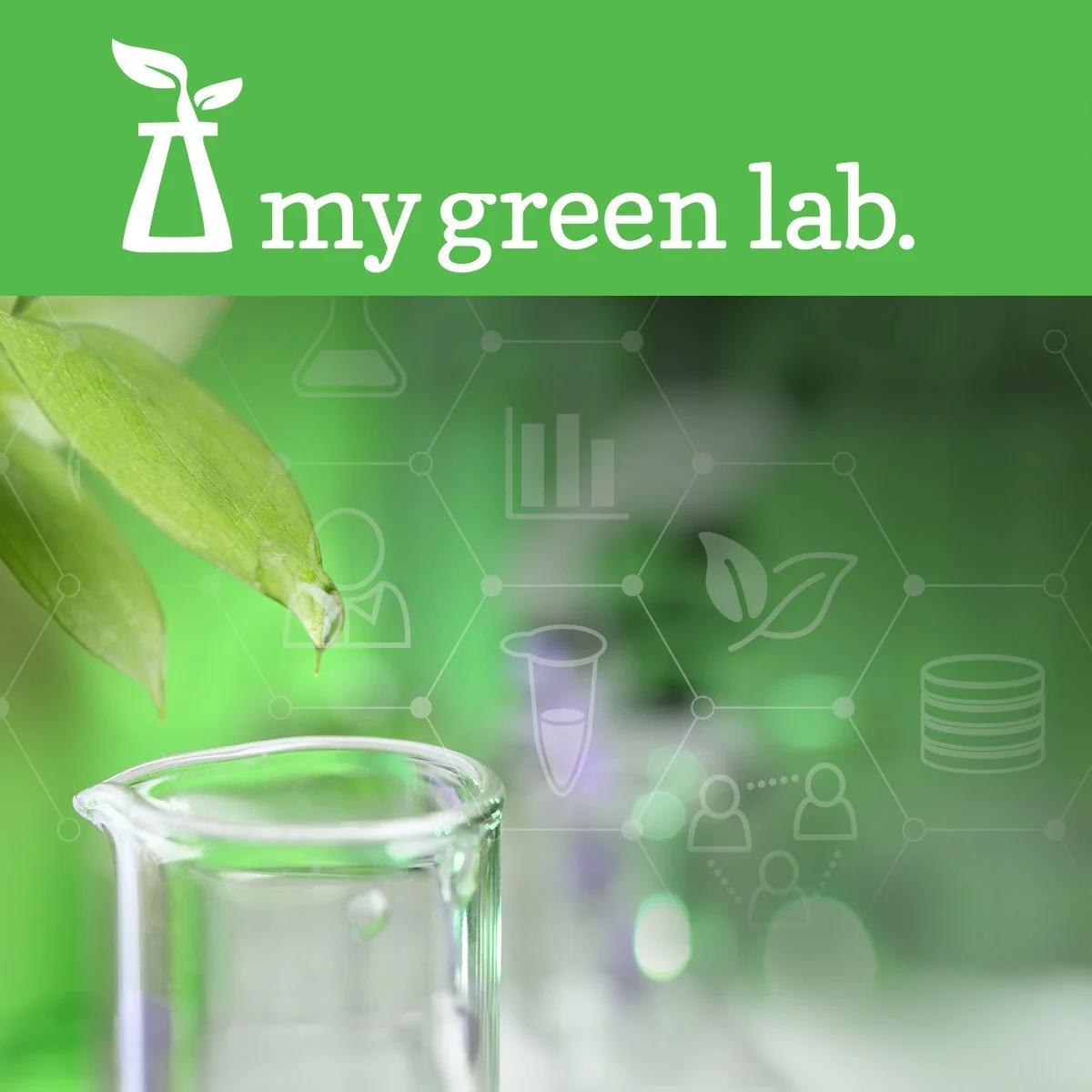Sustainability has become a pervasive force in the world of business, occupying almost every industry across the planet. Shareholders, stakeholders and customers alike are demanding businesses and institutions to engage in some aspect of sustainability, whether it is reducing their waste, energy use, treating their suppliers better or all of the above. The sustainability movement has generated such a groundswell that companies are responding with more environmentally friendly products, better transparency and even whole departments dedicated to working on environmental issues, lest they loose market share to competitor.
Matthew Lynch Systems Sustainability Coordinator, University of Hawaii
Universities are no different; they compete for customers (students) just like any other organization and increasingly students want to go to green schools. That is why we seeing sustainability programs pop up across the nation. Not to be left behind in the rush for schools to “go green” the University of Hawaii (UH), has begun to formulate a sustainability program of their own. UH is made up of 10 campuses spread out over 5 islands, creating one of the most unique and challenging environments for developing a sustainability program. Matt Lynch, is UH’s System Sustainability Coordinator and the man tasked with leading this bold program.
As a repository for all things sustainable, Labconscious will be following Matt’s progress in developing that program. Considering laboratories constitute roughly 30% of UH’s energy consumption, a Green labs initiative will have to be major part of the program. What I find interesting is just at what point in a university's journey to developing a sustainability program does it get comprehensive enough to include a green labs program. To find out the answer to this we asked Matt.
SL: Hi Matt, I think we can start off by dispelling that rumor that nobody works in Hawaii. Contrary to popular belief, people do other things than just lounging on the beach. Can you start off by telling us your name, your position and a little bit about the University of Hawaii’s Sustainability Program?
ML: All right, sure. My name is Matt Lynch and I am the System Sustainability Coordinator for the University of Hawaii.
The University has had an awful lot of [sustainability] initiatives over the past decade and some of the research coming out of the university is really on the leading edge. Though as an institution, it is not until recently that we have formalized our commitment to a sustainability program. What you have seen over the past decade-and-a-half or so, is a waxing and waning of various initiatives, where someone will get passionate about sustainability, find the resources to get their initiative going, and then run into a lack of systemic support to ensure the continuity of their program.
Recently, to build some of that systemic support we have formalized our commitment starting at the Board of Regents’ level thanks to the coordinated testimony of students. They helped the administration understand how important sustainability is to them, which lead to a unanimous decision by the board to amend their policy and articulate sustainability as a priority for the institution for the first time in the University’s history. This policy is very broad and lays out aspirational goals such as carbon neutrality and zero waste.
SL: I have actually read the transcript of that Board of Regents meeting and while it was very dry, as meetings of that nature tend to be, it was inspirational to see such passionate testimony by the study body. But I think the most important thing I am hearing here is that your sustainability program is really a grassroots movement.
ML: Absolutely and what is really interesting about the University of Hawaii’s sustainability initiatives is that they came from the bottom up. Earlier in this year, in twenty-fifteen, we hit another milestone and formalized our Executive Sustainability Policy. This policy is different from the Board of Regents policy, as it comes directly from the president’s office and is more detailed; essentially a guiding framework for implementation for each of the individual campuses to create their own sustainability and resiliency plans.
The Executive Sustainabiltiy Policy has had hundreds of different people weigh in on it, so it has really been written by the people and is for the people. It was not easy to get to this point either; it took 18 months of this policy being vetted by the community and the appropriate campus councils to get to my desk, where it then took another 19 drafts before it was formalized by the University President.
SL: Wow, one tends to forget how long things can take in a large complex institution.
ML: Yes, it was a long road but this is groundbreaking for us because creates funding and a structure for our sustainability program. It also offers us a unique scenario where we, the Office of Sustainability, are nested high enough in the command control hierarchy of the institution that we have enough “teeth” if you will, to get things done. The office reports directly to the Vice President for Administration, who is ostensibly responsible for the operations of the 10 campuses operations across the state. She is the first VP who has ever been formally charged to make sure the university meets its sustainability goals – it’s in her job description.
Now I don’t want to get ahead of us here. We are only just starting to articulate specific goals, which we want to accomplish. We have set up the structure of the program, formalized our commitment and identified thematic areas that we want to pursue: Operations, Curriculum, Research, Community Engagement and Cultural Connections. Now the hard work begins of what does this program actually look like in action & in practice. I mean operations itself has all these sub-categories like waste, water, food, energy etc. So we have a lot more work ahead.
I think an apt analogy is that we are building a house and since 2012 we have been working to dig the foundation. Now that the holes have been dug, we are trying to work through the intricacies of actually pouring the foundations.
SL: So what are some of these goals the university has set for itself?
ML: The policy itself says, that we must establish targets, goals and metrics for the aforementioned areas, not necessarily what those goals are. But since we are a state institution we have to follow certain state mandates as well. For example, every new state building has to be a minimum of Leadership in Energy and Environment (LEED) Silver. Obviously we need to start there. The wording of our policy says that we need to meet the minimum requirement for silver or the equivalent. That “equivalent” piece at the end is important to us because it gives us leeway to go further than LEED, and develop building design standards that are perhaps more tailored and more appropriate and even deeper sustainability approaches.
And then of course, the state of Hawaii has some of the most aggressive energy policies in the world. The challenge for us is to set energy goals for ourselves that are feasible, but also coincide with the state goals. One of which is the Hawaii’s goal of having the utility go 100% renewable by 2045. Another, Act 99, mandates the university to be zero-net energy by 2035.
SL: Those ARE some aggressive goals, but it is exiting to see the university really take ownership of their commitment to sustainability and dive right in. Now Hawaii is obviously in a unique environment, how do you see the advantages or disadvantages of living on an island helping or hurting the program?
ML: Well, to begin with, Hawaii has the highest electricity costs in the nation. So on the flipside of that is that there are significant opportunities to be realized for savings. We view energy efficiency as the potential economic engine to drive the overall sustainability program.
I think it goes back to this question of social architecture and aligning certain incentives with the behaviors you want to encourage. Many of the technical solutions exist to the challenges we face, but the social friction of our institutional structures slow - or even worse, prevent - these solutions from being connected; so how do we redesign our social architecture to reduce this friction and streamline implementation of solutions? Policy, funding, and financial incentives are really powerful levers to do that.
So that’s where we are starting, first with energy efficiency, looking at ways to accelerate the implementation of efficiency projects because of the savings we know can occur, but most importantly to develop mechanisms that can track and the report on those savings. That way once the savings come to fruition, they don’t evaporate into the operations budget. We want to be able to track and harness those savings, so that we can reinvest in other initiatives.
We know that this model works because other organizations have taken this approach with great success.
SL: It sound like you are talking about, what is being termed a Green Revolving Fund. How close are you to getting this fund implemented and then operating?
ML: Correct. The target date for the launch is going to be the first quarter of 2016. Currently, we are in the weeds trying to work out the details on implementation. The approach we are taking here is working first on the processes, and building in some kind of accountability and transparency in reporting. The idea is to use early successes to build confidence in our investors and then take this to scale. Then we can have a massive impact across all campuses.
SL: This sounds like a solid foundation you are building here. Now, I realize this may seem far off but any comprehensive energy management plan is going to have to deal with the operation of certain building types. Since this blog is primarily about life science and lab sustainability. How and where do you see a Green Labs program fitting into your program?
ML: Labs are as I’m sure you know some of the most energy intensive buildings out there. They are complex facilities, not only technically but also in terms of sometimes-conflicting priorities between research and operations. So I think when we tackle Labs we are going to have to take a coordinated and multifaceted approach.
SL: I know from personal experience that working with these two parties takes certain finesse [laughs].
ML: Definitely, and we realize that labs are going to be significant leverage points in reaching our goals for energy reduction - but because of the complexities just mentioned we want to look more deeply into how to tackle this challenge.
Its useful to think of us [the UH Office of Sustainability] as a bootstrapped startup organization within the institution. Given where we are with the resources we currently have, we need to build our capacity and knowledge, so when the time comes to address those larger leverage points like laboratories, we can tackle them property. They [labs] are definitely going to be a key piece of our strategy but right now it is just going to take some time to see where it fits into our plan.
What is helpful and exciting is that we are not doing this alone. We are coming up on our 4thAnnual Sustainability Summit; the University of California on the other hand just had their 14th Annual Sustainability Summit. So there is a wealth of information that we stand to benefit from, with our friends on the west coast. This gives us the unique position with potential to leapfrog and avoid ten years of common pitfalls and move forward more quickly.
SL: Obviously, you have poured a lot of time and energy into this program. You are off to what seems like some great momentum. Where do you see it 5 years from now, do you think you will be able to carry this momentum?
ML: Well I wouldn’t be here if I didn’t. In five years I envision us continuing to move forward with implementing sustainability projects, not just in energy but also across the board like waste and food. I think by that point we will be able to focus on details like water, waste, food, landscaping, groundskeeping and so on.
I am really excited to see what this notion of Community Engagement and Cultural Connection look likes in action and in practice. Because I cant stress enough how unique and important that is to Hawaii. And it’s not something you can really quantify.
SL: Hawaii has this great tradition of sustainability. Before western contact, the Hawaiians wholly sustained themselves without any connection to the outside world. Today that is not the case with so much of the economy relying on imports. So I think its exciting to see the university key of this tradition.
ML: Islands are great teachers for many reasons. For one, things are just so compressed here, it’s like all of these things are put into a pressure cooker and you just have to see what happens. But when we build from a legacy of deeper cultural connections of what once existed on these islands, and what was once achieved with zero inputs at all from the outside world, we see a precedent for what we are doing here. Certainly, there were different social constructs then and now - we need to adapt and apply - but the ancestral technologies can also be adapted and applied to 21st century tech.
That is why Hawaii and all island nations have the potential to lead the way globally, because
what are we as a global community if not an island?
SL: Well, what a quote to end the interview, Matt it was great talking with you. Thank you again for taking the time to meet with me.
ML: Thank you Seth, it has been a pleasure.











Lab sustainability certification programs are learning tools to help scientists identify changes that will reduce environmental impacts and conserve resources. A key feature of these programs is that they can help research institutions reach sustainability goals without undermining the autonomy of academic lab teams. The catch is that only a minority of labs volunteer to participate. This month, I’m summarizing two recent studies that examined scientists’ perceptions of the benefits and pitfalls of using common programs and offered suggestions on how to improve them.